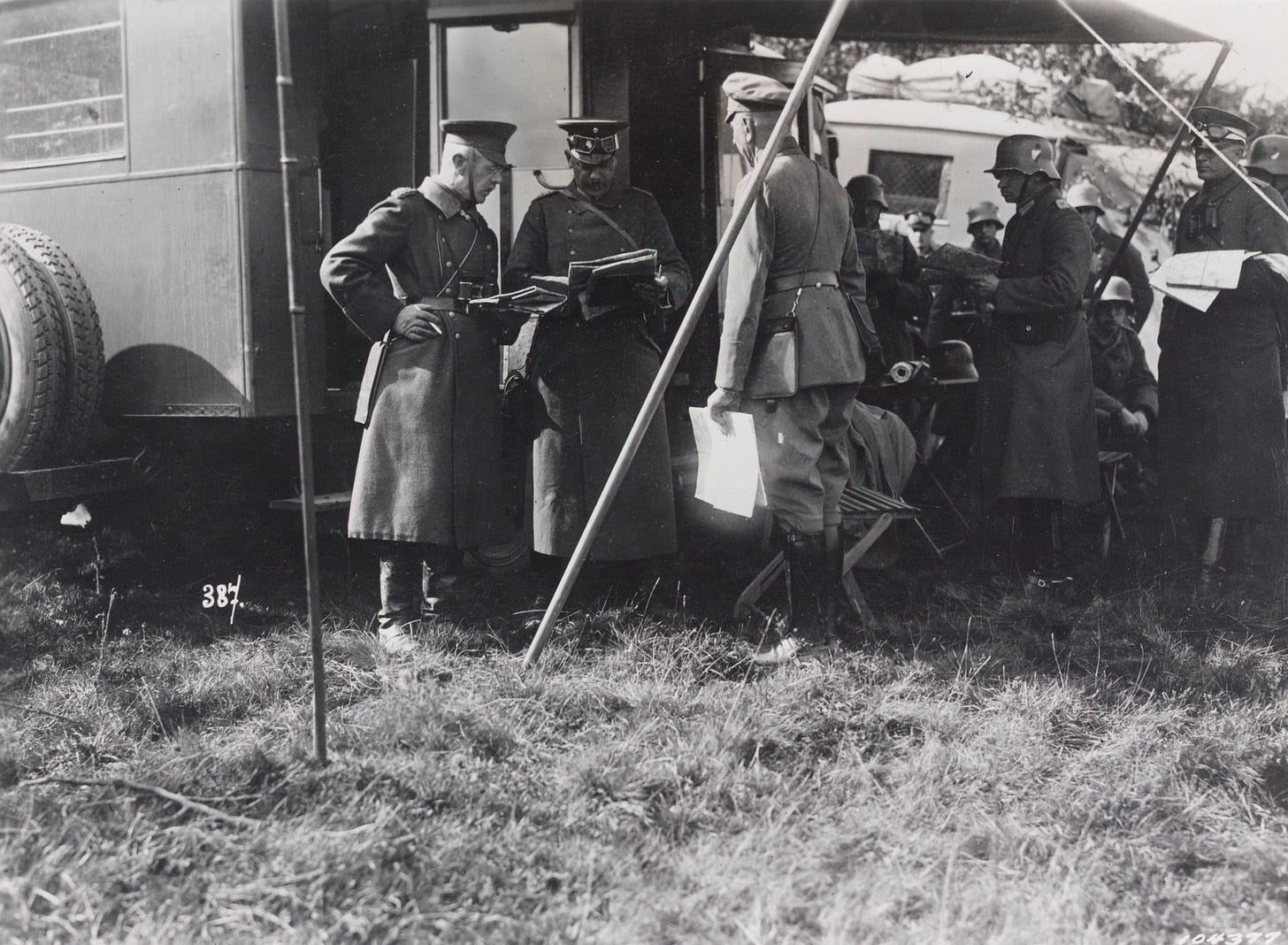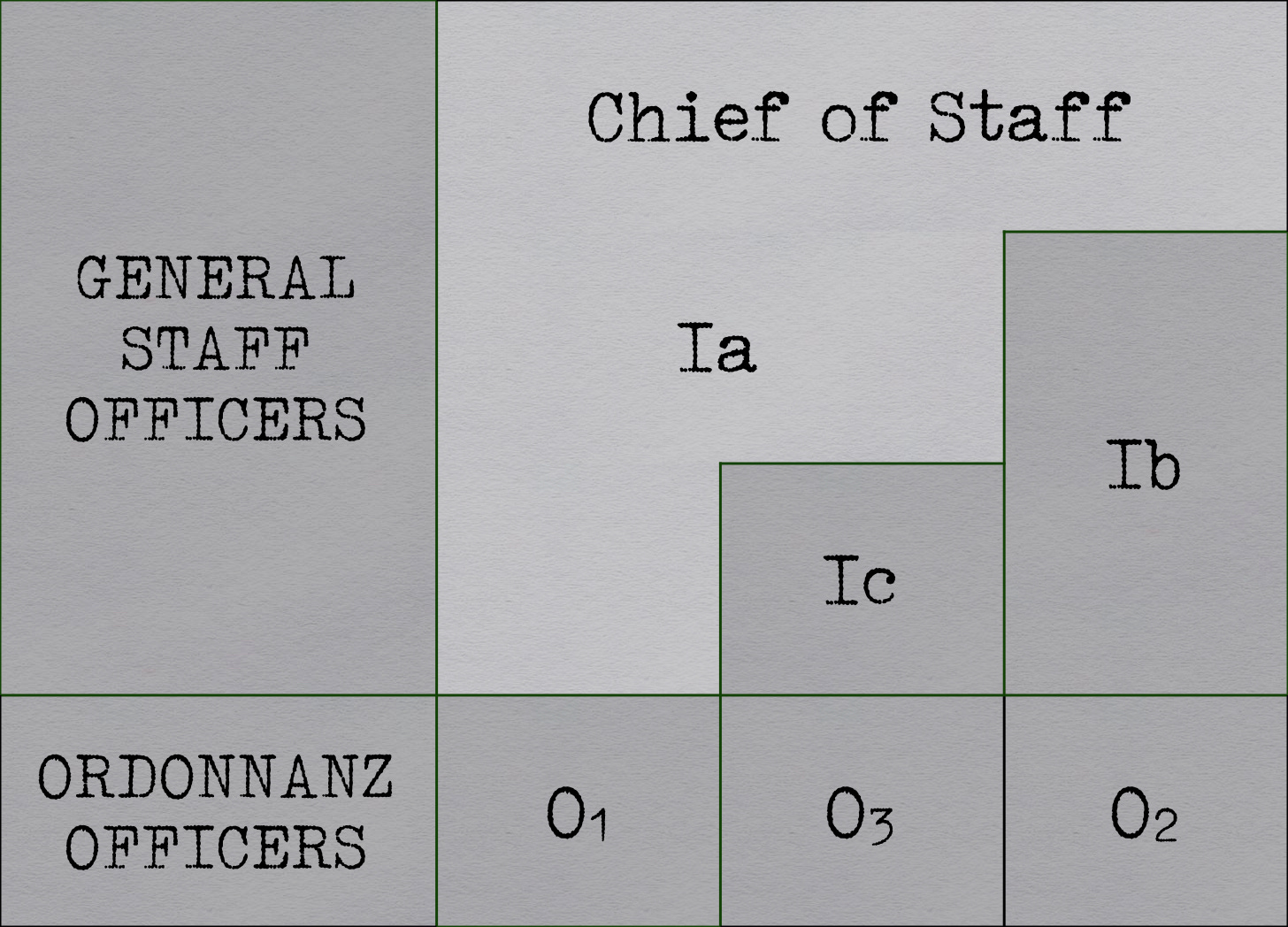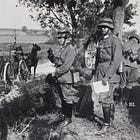Ordonnanz Officers on the Division Staff
As seen by an American officer at the Kriegsakademie (1938)
On the eve of the Second World War, Captain Albert Coady Wedemeyer of the US Army attended the Kriegsakademie in Berlin. Soon after completing, in July of 1938, the two-year course for future officers of the German General Staff, he submitted a pair of reports. The first of these provided a précis of the approach that the German Army took to tactics, leadership, and organization. The second described, in considerable detail, Captain Wedemeyer’s observations of the curriculum he had followed.
In his second report, Captain Wedemeyer laid out the internal workings of the staff of an infantry division. However, as most of this took the form of short notes laid out on a table, present-day readers may find it hard to make sense of the organization depicted. With that in mind, I have repackaged the information in, what I hope will be, a somewhat more accessible form.
In his sketch of the structure of the staff of an ideal infantry division, Captain Wedemeyer lists three ‘senior Ordonnanz officers’. He places one of these (O1) under the operations officer (Ia), a second (O2) under the logistics officer, and a third (O3) under the intelligence officer.
When combined with the absence of an Ordonnanz officer in the bailiwick of the Adjudant, this pattern of placement suggests a strong connection between the services performed by Ordonnanz officers and the work of officers of the General Staff. Wedemeyer’s decision to refrain from translation, moreover, indicates a desire to emphasize the peculiar character of this position. (The only other word that appears in German on Wedemeyer’s chart is Beamter.)
The German-to-English dictionaries I consulted, most of which specialized in military terminology, translated die Ordonnanz as ‘the orderly’ and der Ordonnanzoffizier as ‘the orderly officer’.1 By themselves, these renderings suggest that, while the former performed housekeeping duties of the humbler sort, the latter enjoyed the multifaceted existence of a martial factotem, that is, he served as a ‘silly little jobs officer’.2 Another sort of dictionary, however, tells a somewhat different tale.
My single-volume Bertelsmann, which enjoys a place of honor next to my writing desk, defines Ordonnanz as a ‘soldier assigned to an officer for specified tasks, especially the transmission of orders’. In the same paragraph, it explains that an Ordonnanzoffizier is a ‘junior officer assigned to staff officers’.3
The latter definition accords with a description of role played by Ordonnanzoffiziere in the staffs of German infantry divisions in 1918. In his magisterial study of the organization of the German armies of the First World War, Hermann Cron describes each of the three Ordonnanzoffiziere allowed to each division staff as the ‘assistant’ [Gehilfe] of one of the principal staff officers.4
For Further Reading:
Folk fond of grammatical gender will delight in the knowledge that while die Ordonnanz is a feminine noun that describes a person who keeps things tidy, der Ordonnanz is a masculine noun that means a law or regulation.
Remember, Gentle Reader, that The Tactical Notebook is a family-friendly blog. (And, yes, @thelongwarred, I’m looking at you.)
In the original German, the definitions read Soldat, der einem Offizier für bestimmte Aufgaben, bes. das Übermitteln von Befehlen, zugeteilt ist and den Stabsoffizieren zugeteilter jüngere Offizier. Ursula Hermann, editor Die deutsche Rechtschreibung (Münich: Bertelsmann Lexicon Verlag) page 653
Hermann Cron Die Organisation des deutschen Heeres im Weltkriege (Berlin: E.S. Mittler, 1923) page 41










I was going to ask how this played out logistically but I was so overwhelmed by gratitude I cannot form thoughts.
“Remember, Gentle Reader, that The Tactical Notebook is a family-friendly blog. (And, yes, @thelongwarred, I’m looking at you.)”
This is my first Citation ever.
I’m so proud. 🥲
Thank you.
I will repost, I’m considering adding to my profile, and will probably have this framed.
I can’t find words to thank you.